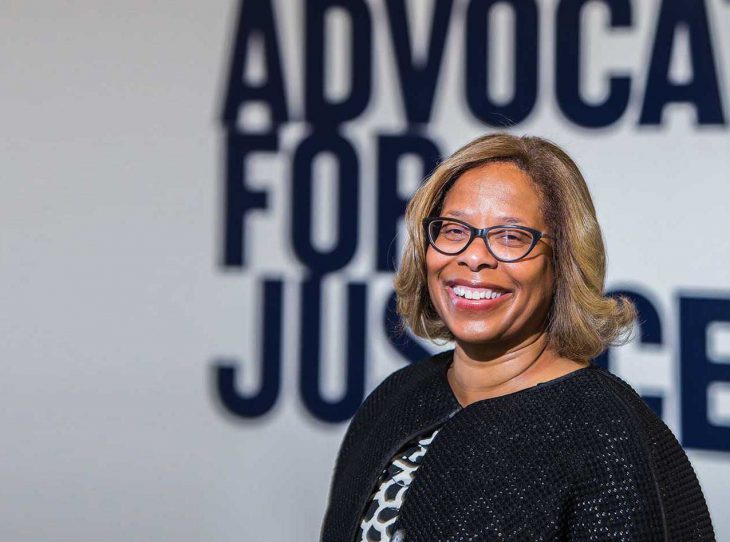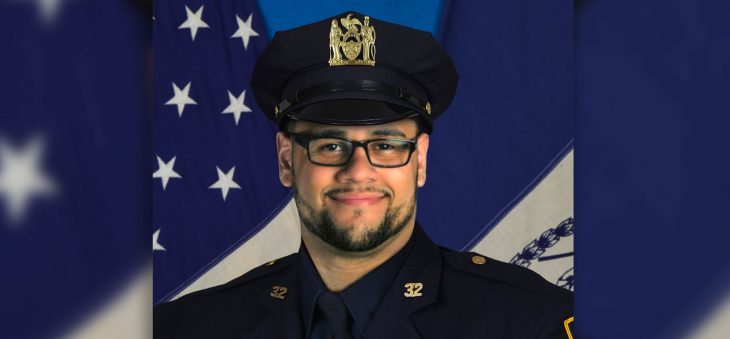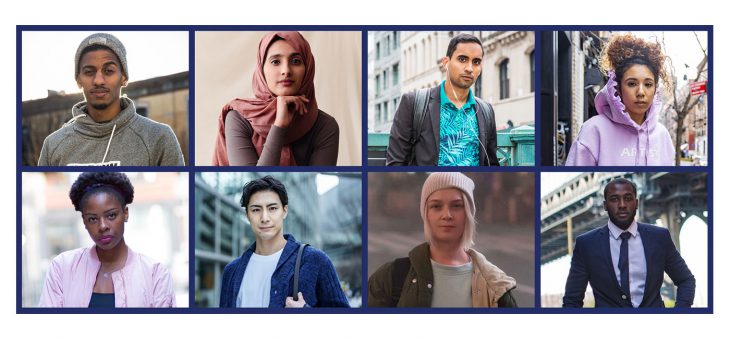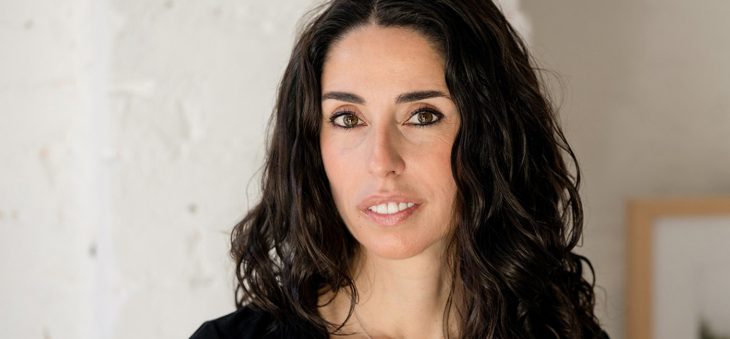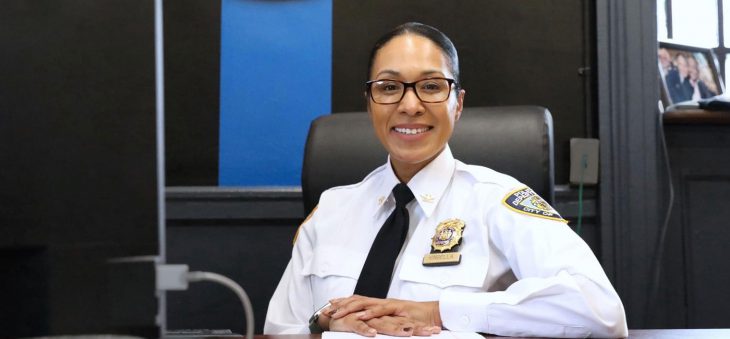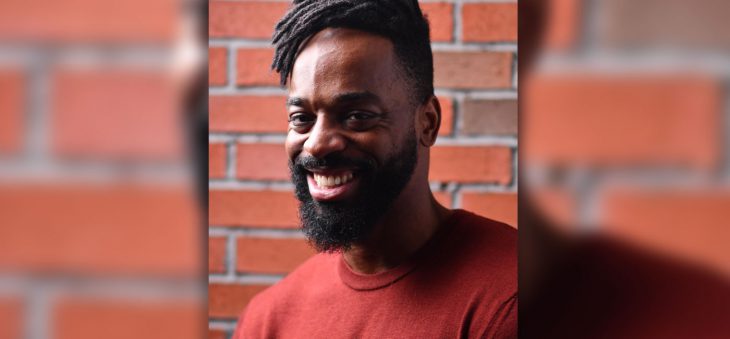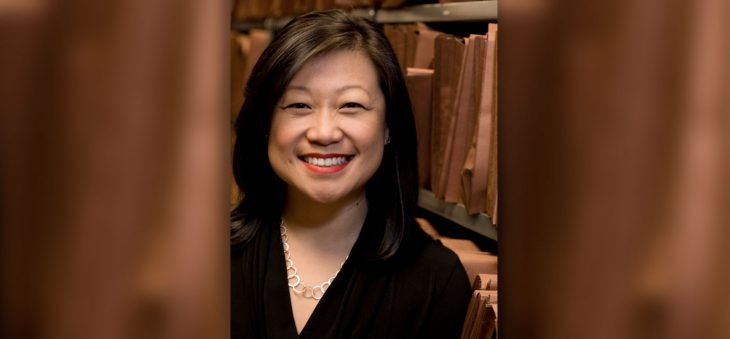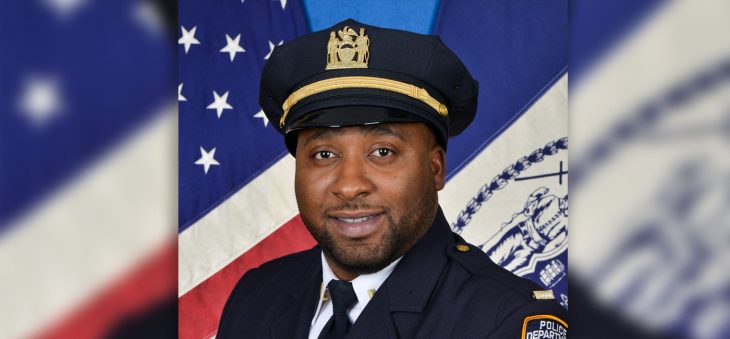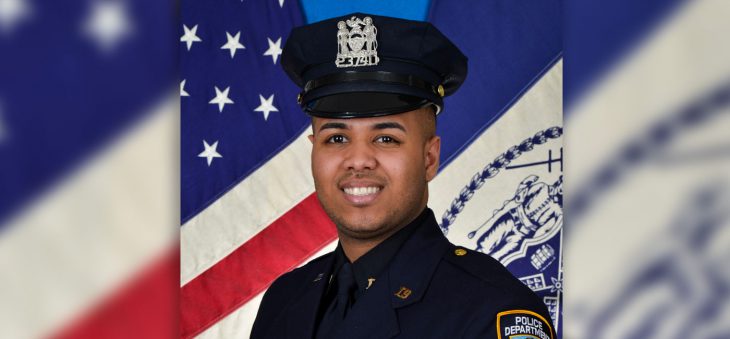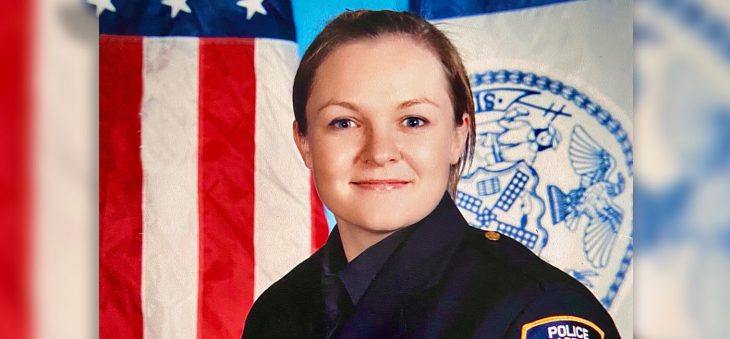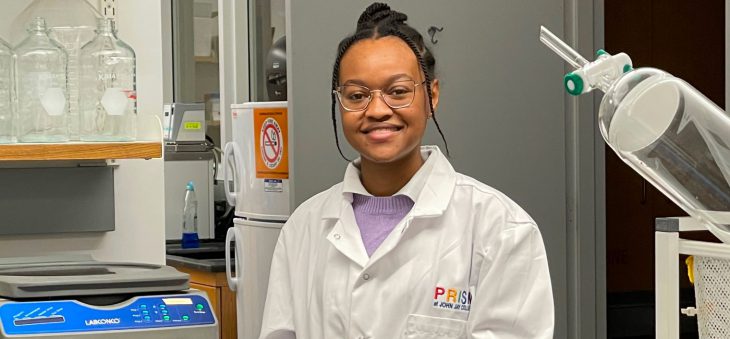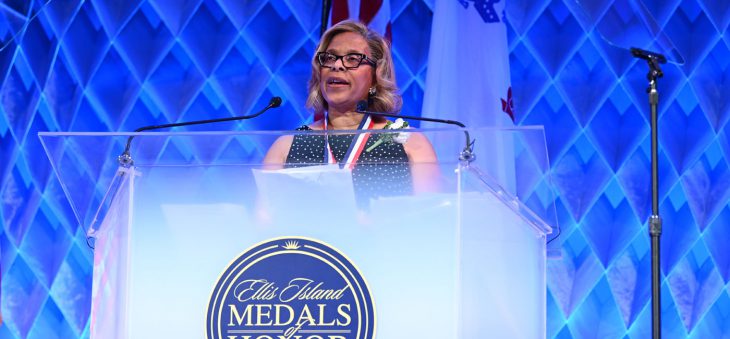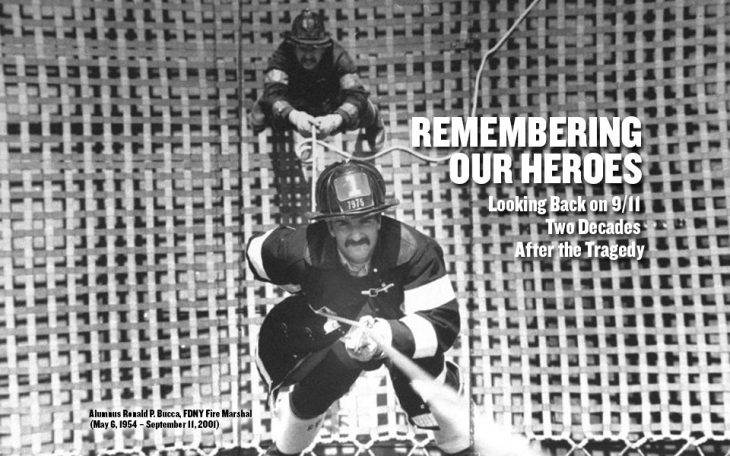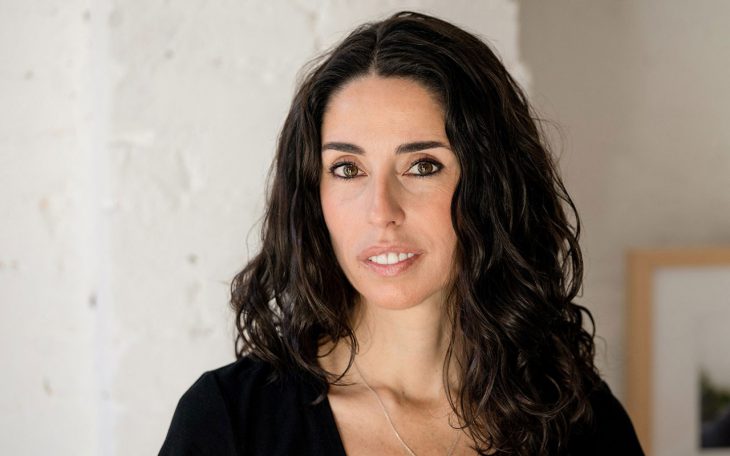Tackling the growing food-insecurity problem, making sure that John Jay students are nourished both mentally and physically.
By Andrea Dawn Clark
When Anthony, a John Jay undergraduate student, walked into the Wellness Center he had one goal in mind: apply to the MetroCard program. His Supplemental Nutrition Assistant Program (SNAP) benefits were cut off, and he was struggling to make ends meet. He wrote down on the form, “At this point, it’s either buy a MetroCard and don’t eat, or eat and don’t come to school.” Luckily, his form fell into the hands of Malaine Clarke, Health Services Director and Food Bank Manager.
Clarke tapped her pen on the MetroCard area of the form and said, “Anthony, I’m not worried about this, we can get you a MetroCard. I’m worried about you not eating.” After a long heart-to-heart, she learned that Anthony hadn’t eaten all day, and that he wasn’t eating so that his sick mother at home would have food. Clarke went out to her “comfort station”—a food table of her own making where students can pick up breakfast, lunch, and snacks—and brought him a bagel with cream cheese. “He started crying and explaining how his family was cut off SNAP. I took him into the food pantry and he just sat on the floor and wept. He called his mother and said, ‘Mom I got food! There’s a lady at school who gave me food.’ His mother started crying on the phone,” says Clarke. “When Anthony walked out with his bags of food, he asked me if he could take a bagel home to his mom so she could have breakfast too.”
According to the #RealCollege Survey Report, created by the Hope Center, out of nearly 22,000 student respondents from all of the undergraduate campuses in the City University of New York (CUNY) system, 48 percent had recently experienced food insecurity. It’s affecting their grades, their experiences, and their families. Understanding the depths of the problem at John Jay, our community is tackling food insecurity through the Wellness Center’s food pantry and comfort station, donated MBJ Food Services meal vouchers, the Community Outreach and Service Learning’s (COSL) Community Supported Agriculture (CSA) food donation program, and Single Stop services and resources.

The Food Pantry
In March 2010, Clarke started to notice students coming into the Wellness Center complaining of headaches. After asking a few questions, she figured out that most of them hadn’t eaten anything all day. To combat the problem, Clarke and her staff pooled together their own money and created a “comfort station” with tea, coffee, crackers, cookies, fruit, and snacks. “Students were coming in who didn’t have illnesses. They didn’t need the health services. They were coming for the food,” says Clarke. She went to her vice president and received $250 for a comfort station program. In the first semester, 237 students visited it. This past academic year, 1,740 students came to the comfort station for food, with a total of 4,142 visits.
Clarke’s food pantry had a similar necessity-meets-tenacity inception. Impressed with the success of Clarke’s comfort station, her vice president approved Clarke’s food pantry idea—provided that she could find the space and resources for it. Clarke wrote a proposal to The Carroll and Milton Petrie Foundation to use a portion of their generous emergency fund donation for a food pantry. It was approved to receive $7,500 for the academic year, and Clarke was determined to make it a reality. She reached out to other CUNY schools to find out how they worked with food banks, and she found a space on campus. “It started out in 2016 in the Wellness Center hallway with just two cabinets of food,” says Clarke. Then the pantry moved into a storage room, and it grew even further with new shelving and two refrigerators acquired through generous donations to the College. Over the past three years, the food pantry has grown closer and closer to Clarke’s vision of an on-campus grocery store for people facing food insecurity, with the help of additional funds from The Carroll and Milton Petrie Foundation. Last year the food pantry served 675 students and 1,762 household members.
And, Clarke’s impact hasn’t gone unnoticed. One day, Senior Adjunct Professor Anthony Gentile walked into the Wellness Center and asked about the food pantry program. “Right then and there, he pledged $5,000 of his own personal money to help us feed our students,” says Clarke. “With that money we extended our comfort station to serve breakfast items, like oatmeal, eggs, and bagels. And, at lunch we’re offering salad, soup, and mac and cheese.”
The Food Vouchers
There’s a reason why Joaquin “Johnny” Vasques, the owner and founder of MBJ Food Services, started a food voucher program for the John Jay community. “When he first immigrated to America from Argentina, he was 18 years old, he didn’t speak English, and he often went hungry,” says his daughter Aldana M. Vasques Williams, who oversees MBJ alongside him. “If my dad saw that someone couldn’t pay for the food, he’d take them aside and hand them a sandwich. He had these little coins made up and he’d hand them out to students, telling them to use them to buy a hot meal or sandwich. And the cashiers know that the coin would be worth whatever their meal cost.”

Taking Johnny’s coin initiative to a whole new level, MBJ donated $60,000 worth of food vouchers—a ticket version of Johnny’s coins—during last year’s Annual Day of Giving. “The pledged amount we committed to is 10,000, six-dollar vouchers per academic year that students can receive from the Wellness Center to purchase food at the cafeteria,” says Vasques Williams. The vouchers were purposely made to look identical to their gift certificates—reducing any stigma attached to using them—and they cover the cost of a nourishing meal prepared by MBJ. So far, 14,120 vouchers have been given out to students, but that hasn’t stopped Johnny from passing out the coins jangling around in his pockets. “He loves doing that. It’s harder on our record keeping, but we know he’ll never stop.”
The COSL/CSA Food Program
Every Tuesday, members of CSA come to John Jay to pick up their fresh produce. Members of the profit-sharing initiative pay farmers approximately $300 in advance for a 22-week share of their crops. Inevitably, a hefty portion of the produce never gets picked up. That’s where COSL comes in. They pack up the leftover bounty, store it in MBJ’s kitchen, and pass it out in the atrium the following Wednesday. “I think it illustrates the amount of waste in our food system,” says Declan Walsh, COSL Director. “At the same time that you have this horrible food insecurity problem, you have 40 percent of the food that goes from the land to the garbage.”
His COSL students handle all the logistics of the program, from packing up the veggies to inviting their fellow students to take home the produce. One Tuesday, Walsh started chatting with a COSL volunteer and learned that he worked as a chef and he loved to cook. Looking down at the produce, Walsh asked the student, “What would you do with these vegetables?” The student suggested a squash soup. “MBJ worked with us, supervising him, and we got little cups, and the following day we handed hot squash soup instead of produce. The students loved it, and our ‘COSL chef’ was really proud.”

The Single Stop Services and Resources
The situation that Anthony faced, losing his SNAP benefits, is incredibly common. The supplemental nutrition benefits are based on household income and are provided by the federal government for a certified period. “In one academic year over 300 students come into Single Stop to apply for SNAP benefits, and about 300 to 600 students need assistance with reapplying and mediation to keep their benefits,” says Nichole Acevedo, Single Stop Program Manager. Her main mission is to help students navigate the tools, resources, and services that they need to alleviate socioeconomic struggles and financial emergencies that could negatively impact them. “Right now, one of the biggest hurdles is a federal law within SNAP benefits that makes it much more difficult for a full-time college student, who may not have a job, to get benefits,” says Acevedo.
To expand healthy options for food-insecure students, Single Stop is working with the Department of Health and Mental Hygiene to promote farmer’s markets. “We tell our students that if they use their SNAP EBT card at a farmer’s market, and they spend five dollars, they get a two-dollar voucher back,” says Acevedo. “It’s another incentive for students to purchase more fruits and vegetables for their families.”
Along with Clarke, Acevedo worked with Anthony when he first came to the Wellness Center. “This was a student who was doing everything on his own, and he was brave enough to ask for help. There are so many ways that we can help the ‘Anthonys’ in our community,” says Acevedo. “We can find a way to make sure they get to school. We can find a way to make sure their family has healthy food. And, we can find ways to help them flourish.”

